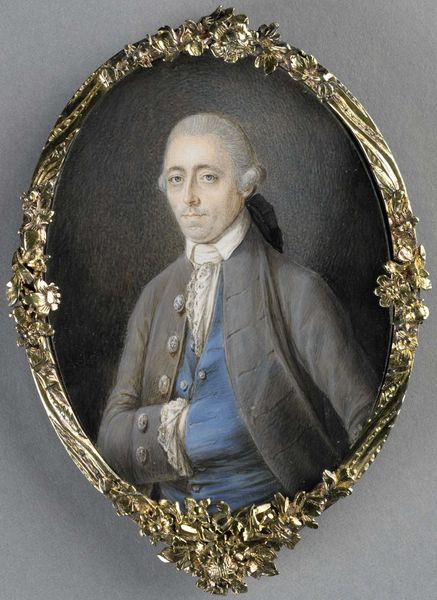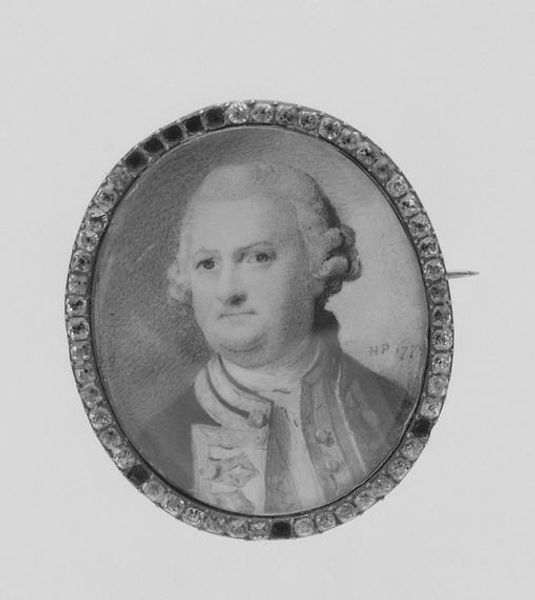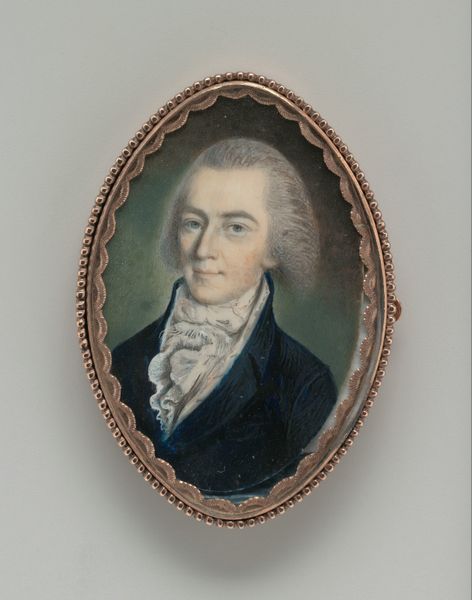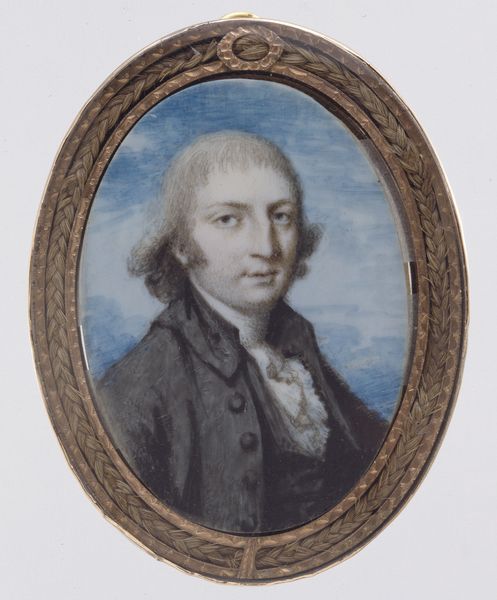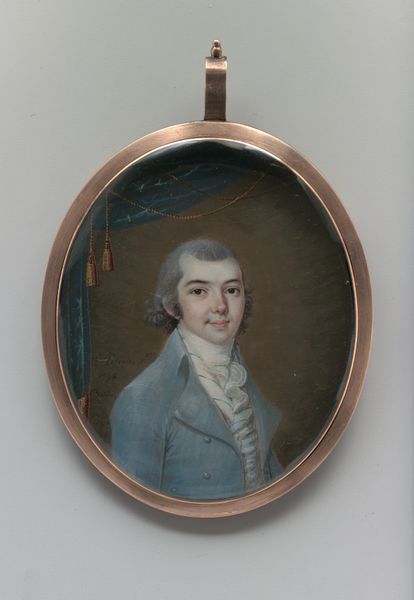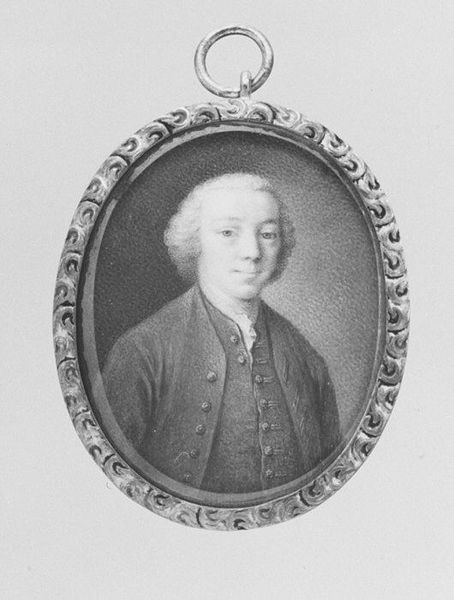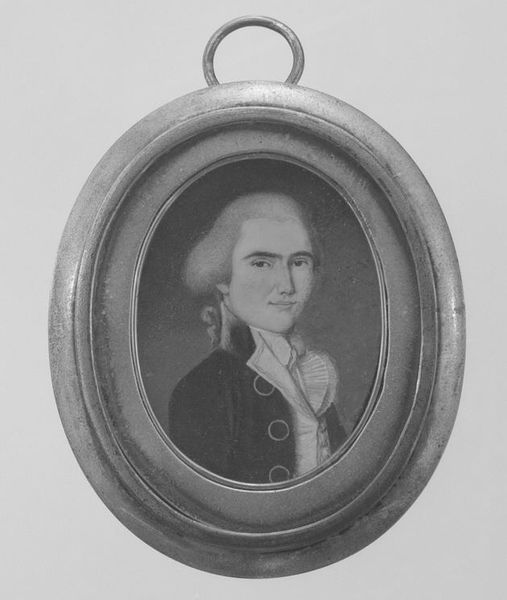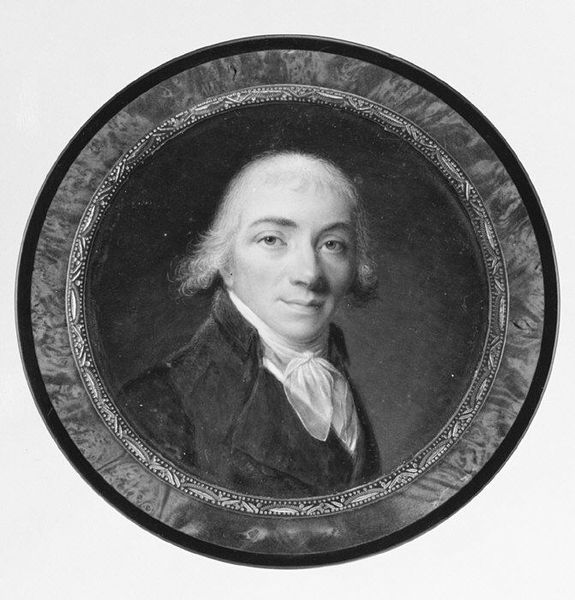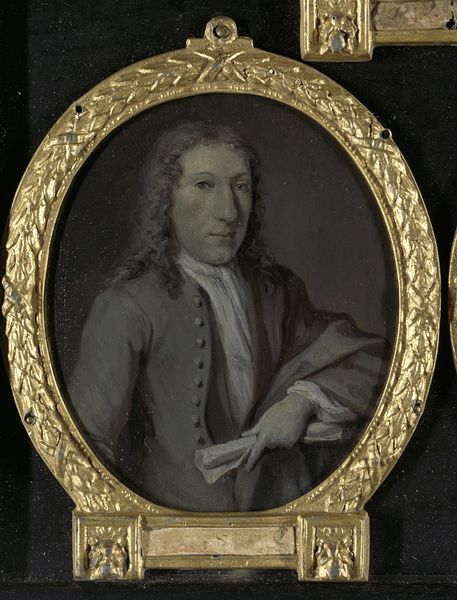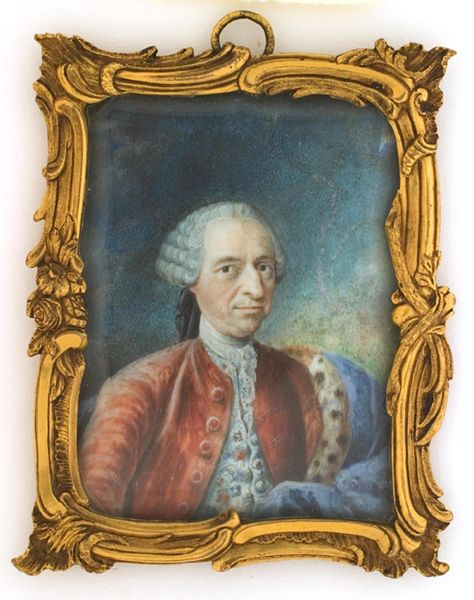
#
3d sculpting
#
3d printed part
#
sculpture
#
strong focal point
#
sculptural image
#
portrait reference
#
unrealistic statue
#
framed image
#
framed
#
statue
Dimensions: height 7.6 cm, width 6.6 cm, depth 0.6 cm
Copyright: Rijks Museum: Open Domain
Curator: This striking portrait of Joan Derk van der Capellen tot den Pol dates to between 1784 and 1800 and is attributed to Johan Antonie Kaldenbach. What are your immediate thoughts? Editor: Well, it’s quite formal. Almost… distant. The high collar and tightly composed frame give a sense of rigid social structure, reflecting perhaps the world in which van der Capellen operated. Curator: It's interesting you pick up on that feeling of formality. Miniatures such as this often served very specific purposes, acting almost as portable emblems of status and connection. What do you read from the symbols presented here? Editor: It does seem to be missing the symbols that signal that political project—we’re confronted with the quiet assertion of a gentleman of the era rather than any radical elements that might make his political cause explicitly clear. It seems muted by presentation. Curator: Indeed. Van der Capellen was a significant political thinker during a time of great social upheaval in the Netherlands, and while the portrait itself doesn’t broadcast that, consider its function within that context. The image seems like an item circulated amongst allies and those in sympathy with his thinking; an emblem, even. Editor: It’s almost unsettling, the way the frame becomes part of the meaning. It’s not merely decorative but reinforces ideas around enclosure. It emphasizes van der Capellen's position as someone framed by circumstance. Curator: An interesting take, especially given his progressive politics. The symbolism becomes rather rich when you start thinking about this tension: a radical mind contained within a symbol of tradition and order. It almost suggests the limitations, or perhaps the carefully managed presentation, of radicalism itself. Editor: So the quietness of it speaks louder? The painting and its message is so much about who can decode that set of signifiers? It’s intriguing, this sense of hidden layers. Thanks for helping to draw those out. Curator: The pleasure is all mine. It reminds us that portraits, and miniatures in particular, aren't always simple records; they are intricate dialogues between image, context, and intent.
Comments
No comments
Be the first to comment and join the conversation on the ultimate creative platform.

